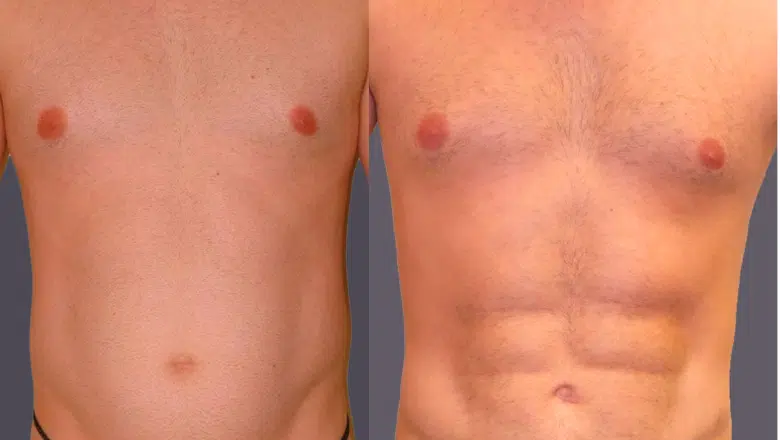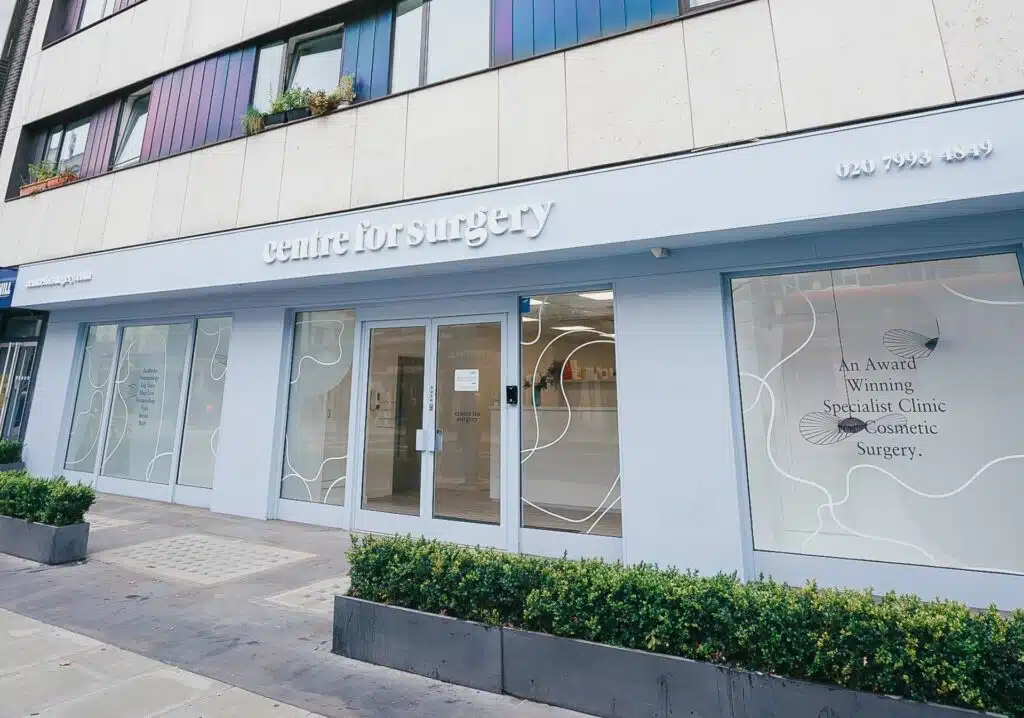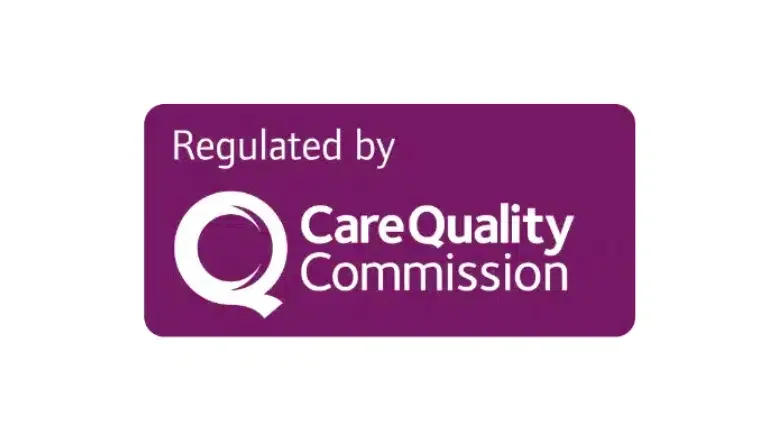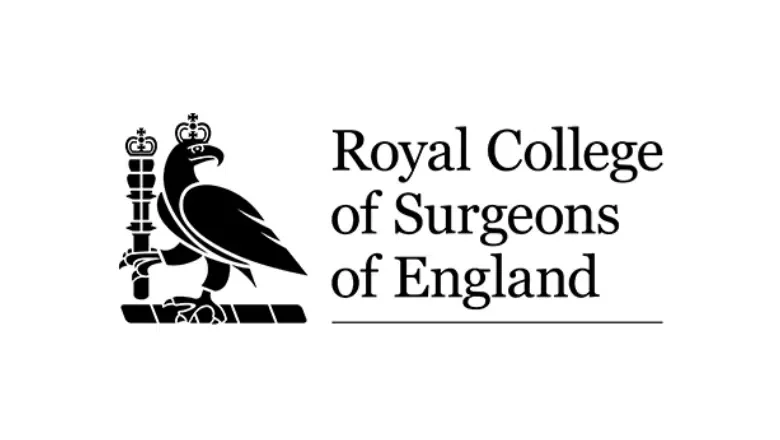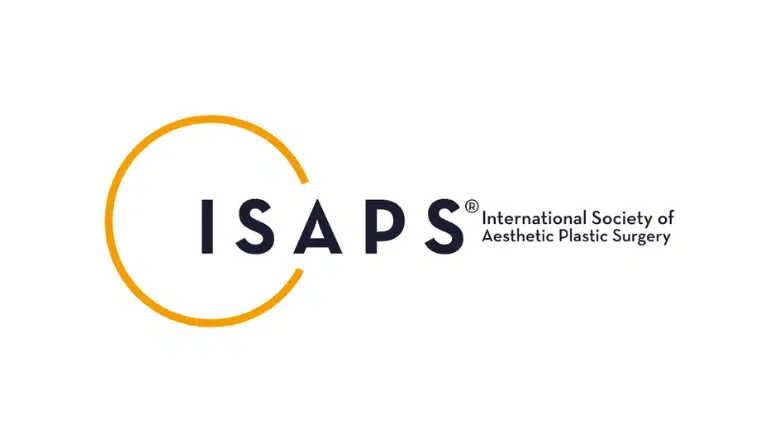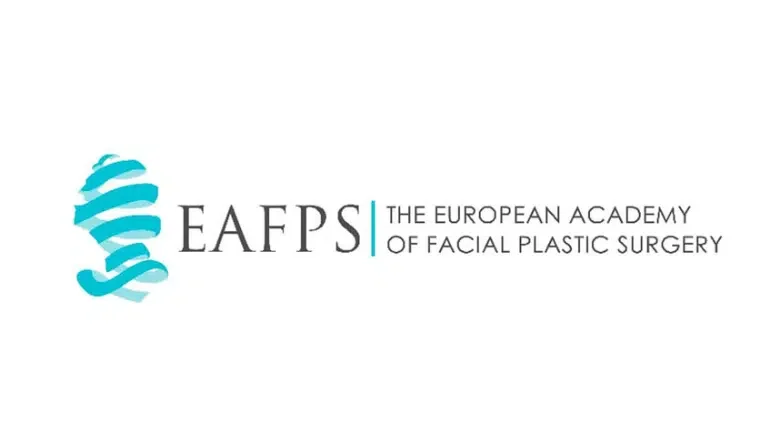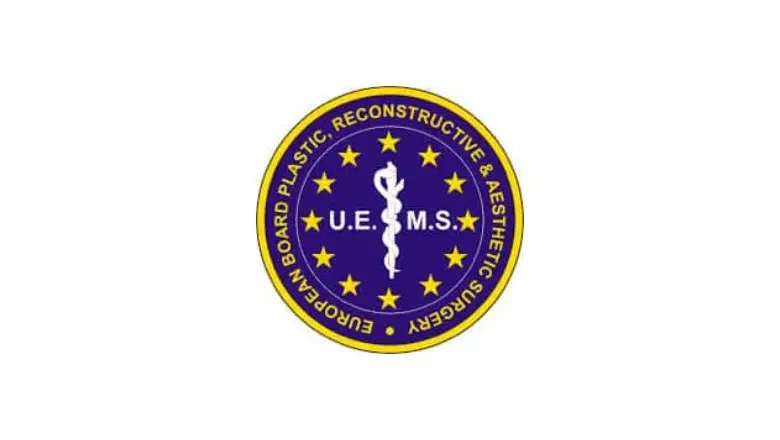High Definition Liposuction (HD Lipo) in London
HD lipo, also known as high-definition liposuction, HD liposuction or high-definition lipo, is an advanced body contouring technique used for the precise delineation of muscular contours in men. Technical advances in liposuction have parallelled advances in HD lipo. Abdominal etching originally emerged as a differential liposuction technique to enhance the appearance of the abdominal musculature in male patients by removing fat with liposuction at different levels. Although liposuction remains the most popular cosmetic surgical procedure performed in men, patients are increasingly asking for results that are beyond the correction of areas with excess fatty tissue. HD lipo, or HDL for short, is designed to sculpt the muscular anatomy of the torso to achieve results that far exceed anything attainable with liposuction.
Abdominal etching is performed with liposuction in the superficial fat plane. The advanced abdominal etching technique slowly gained acceptance and popularity among surgeons for the treatment of patients seeking well-toned bodies with muscular definition. High-definition liposculpture (HDL) is an evolution of the abdominal etching technique and involves several techniques designed to emulate athletic and attractive surface anatomy. HD lipo is a multistep liposuction procedure that debulks the deeper fatty tissues, whereas more superficial liposuction highlights the natural surface grooves. HDL is now a unique subspecialty in its own right and quite separate from traditional liposuction. HDL is an integration of art and science to deliver results that are very highly regarded by plastic surgeons and patients alike.
At Centre for Surgery, Lipo HD uses PAL technology to achieve both deep fat layer debulking and superficial fat layer sculpting to demarcate and highlight the regional musculoskeletal anatomy of our male patients. Our surgeons utilise precise intraoperative techniques to ensure a smooth postoperative experience, including recovery, satisfaction, and minimising complications.
What is High Definition Liposuction?
High Definition Liposuction, also interchangeably known as HD Lipo or Hi-Def Liposuction, stands as a pioneering advancement in cosmetic surgery, designed to sculpt and redefine the body’s contours with precision unmatched by traditional liposuction methods. This innovative technique goes beyond mere fat removal. It meticulously accentuates the underlying musculature, offering patients a more toned, athletic appearance.
At the heart of High Definition Liposuction is the use of state-of-the-art technology that allows surgeons to remove fat strategically, while simultaneously enhancing the visibility of muscular definition. This method is particularly effective for individuals who, despite a healthy lifestyle, struggle to achieve the desired definition in areas such as the abdomen, arms, thighs, and back.
HD Lipo differs from conventional liposuction by its emphasis on precision and detail. Traditional liposuction focuses on reducing fat volume, which certainly improves body shape but does not necessarily enhance muscle tone or definition. High Definition Liposuction, on the other hand, is akin to the work of an artist, where the surgeon uses their skill and the latest technology to carefully shape the body, accentuating the natural contours and muscular form.
HD Lipo Before & Photos - Real Patient Results
Benefits of High Definition Liposuction: A Path to Refined Physique
High Definition Liposuction, often referred to as HD Lipo, Hi-Def Liposuction, or HD Liposuction, is a cutting-edge cosmetic procedure that offers a plethora of advantages for those seeking to enhance and refine their body contours. This advanced technique stands out in the realm of cosmetic surgery for its ability to meticulously sculpt the body, providing a more defined and athletic appearance. Let’s delve into the myriad benefits that High Definition Liposuction brings to the table, marking it as a preferred choice for body contouring.
Enhanced Muscle Definition
One of the most significant benefits of High Definition Liposuction is its ability to accentuate the underlying musculature, offering a more toned and sculpted look. Unlike traditional liposuction, which primarily focuses on fat removal, HD Lipo targets specific areas with precision to highlight muscular definition, giving the body a more chiselled and athletic appearance.
Precise Fat Removal
HD Liposuction utilises state-of-the-art technology to remove fat strategically and with high precision from targeted areas. This precision ensures that the desired body contours are achieved more effectively, offering a tailored approach to fat reduction that aligns with the individual’s body goals.
Minimally Invasive with Faster Recovery
Compared to conventional liposuction techniques, High Definition Liposuction is less invasive, which translates to shorter recovery times. Patients can often return to their daily routines more swiftly, with many able to resume normal activities within a few weeks post-procedure, following their surgeon’s guidance.
Boost in Self-Confidence
The aesthetic improvements achieved through HD Liposuction can significantly enhance an individual’s self-esteem and body image. By sculpting a more desirable physique, patients often experience a newfound confidence in their appearance, positively impacting their overall quality of life.
Complements a Healthy Lifestyle
High Definition Liposuction is particularly beneficial for individuals who maintain a healthy lifestyle but struggle to eliminate stubborn fat deposits or achieve the muscle definition they desire. This procedure can complement diet and exercise efforts, offering a solution that aligns with and enhances a fit and active lifestyle.
Long-Lasting Results
The results of HD Liposuction, when coupled with a consistent healthy lifestyle, can be long-lasting. The removal of fat cells from specific areas means those cells cannot return, making it easier to maintain the sculpted appearance with regular exercise and a balanced diet.
Versatility
High Definition Liposuction is versatile, allowing for customisation to meet the unique needs and goals of each patient. It can be applied to various parts of the body, including the abdomen, arms, thighs, and back, making it a flexible option for those looking to address multiple areas of concern.
Am I suitable for Lipo HD?
All prospective patients must be assessed for their suitability by one of our surgeons. Ideal patients are men aged between 25 and 39 years, with a body mass index (BMI) of <30 kg/m2, an absence of abdominal hernia or abdominal muscle bulging, no history of massive weight loss, no contraindication for TIVA general anaesthesia, and without any significant medical conditions. Other variables taken into consideration in the physical examination are skin quality (tone and elasticity), pinch test (to evaluate subcutaneous vs intra-abdominal fat), and scars from previous surgeries.
In addition to the above criteria, patients must adhere to a strict postoperative protocol, which includes regular clinic visits, medical photography at predetermined postoperative time intervals, compliance with compression garment use as instructed by the surgeon, massage therapy for lymphatic drainage and demarcation, staged return to work, and staged return to physical activity (which includes exercising and working out at the gym). All patients are encouraged to start a healthy, protein-rich diet postoperatively and adhere to exercise habits as soon as the compression garment is removed.
The importance of having realistic expectations
Your surgeon will explain the procedure in detail during the preoperative visit. With HD lipo, the results depend on many factors (including the patient’s personal anatomy, the volume of excess fat, exercise habits, etc.) and cannot simply be replicated from a photograph which is shown to the surgeon during your consultation.
Trust a body contouring plastic surgeon
A body contouring plastic surgeon is trained to undertake aesthetic surgical procedures on the breast and body region. They are dedicated sub-specialists. Compared with general plastic surgeons, body contouring plastic surgeons are inherently better trained to perform advanced breast and body procedures. The extra years of surgical training by body contouring specialists focused on the breast and body region results in an exceptionally high degree of skill.
What does Hi Def Lipo involve?
HD lipo is performed at our state-of-the-art Baker Street clinic in Marylebone as a day case procedure. This means you will be admitted and discharged on the same day, thus allowing you to recover in the comfort of your own home.
Hi Def lipo comprises the treatment of:
- Abdomen and flanks
- Chest
- Upper arms
Preoperative marking for Hi-Def lipo
Immediately before the procedure, patients are always marked in the preoperative area while in a standing position. The underlying bony and muscular anatomies are the guidelines for skin marking at all times. The surgeon starts by marking the chest anatomy following the inferior horizontal and oblique lines of the pectoralis muscle; the upper part of the chest is evaluated to assess whether a fat transfer is required. The abdominal inscriptions are examined and carefully marked to delineate the underlying rectus abdominis anatomy. The pelvic bones and ligaments are marked. The groove between the deltoid and the biceps anteriorly and the deltoid and triceps posteriorly are marked. In the lower back, the surgeon marks the lateral border of the thoracolumbar fascia, the inferior border of the latissimus dorsi, and the superior border of the gluteus maximus muscle.
HD lipo is performed with the PAL system (power-assisted liposuction). Fat harvest and superficial liposculpting are done by means of bent and straight 5-mm exploded tip cannulas. Fat is collected and processed with a fat grafting system. Fat transfer to the chest is performed with a 4-mm single-side-hole injection cannula. HD lipo is performed under TIVA general anaesthesia.
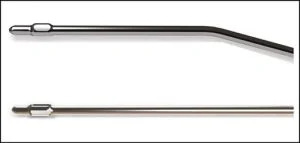
Step 1:
After induction of general anaesthesia, the surgeon starts by turning the patient into a prone or face-down position. The gluteal area, back, and arms are prepped and draped. Two 5-mm incisions are made just above the gluteal region, and two 5-mm incisions in the back of the armpit fold. A tumescent local anaesthetic solution is injected into the fat compartments to be treated. Our surgeons use the SAFElipo technique for lipo-aspiration. After the deep fat compartments in the lower back are aspirated, superficial fat compartments are treated to mark the lower back lines (lower border of the latissimus dorsi muscle following along the lateral thoracolumbar fascia and the lateral vertical line of the erector spinae muscle caudally). The back of the upper arms is marked by suctioning the superficial fat layer between the deltoid and the triceps.
Step 2:
Patients are then turned into a supine or face-up position, and 5-mm incisions are made in the following sites: groin region (bilaterally), belly button, below both nipples, and armpit crease on both sides. SAFElipo technique is used for extraction of the deep medial and lateral abdominal compartments (below and above the umbilicus) and the deep fat compartment in the armpit. This is followed by treatment of the superficial fat compartments along the preoperatively marked lines on the abdomen and chest. Abdominal inscriptions overlying the rectus abdominis are marked through the belly button and the areola region without the need for additional incisions. This is accomplished with the use of both straight and curved cannulas. The front of the upper arms is treated through the armpit incisions by aspirating the fat between the deltoid and biceps.
Step 3:
After harvested fat is washed and filtered in the fat grafting system, transfer to the chest area is achieved through the areolar and armpit incisions. Low-volume fat grafting is performed in the subcutaneous pectoral area with a 4-mm single-side-hole cannula. There is no need for the placement of surgical drains after HD lipo.
After the wounds are closed and dressings have been applied, specialised compression foam strips are applied over the superficially marked areas. Patients are then placed in compression garments before finally being woken up from TIVA general anaesthesia.
Recovery after High Definition Liposuction
Patients are discharged home later in the day once they have met all the discharge criteria.
Patients will have scheduled postoperative clinic visits on days 3, 7, and at six weeks, three months, six months, and one year. Manual lymphatic massage needs to be scheduled for two sessions during the first postoperative week. More sessions are scheduled if found necessary. Manual lymphatic massage, which is performed in our practice by our specialist massage therapists, includes draining areas of swelling to the closest lymph nodes, as well as drainage of superficial fat areas that are treated to avoid the development of fibrosis and loss of definition. All patients are given documents to complete postoperatively detailing their intake of pain medication, number and dates of massage sessions, compression garment use, return to work, return to full activity and physical exercise, and their satisfaction score (1-10, with one being extremely bad and ten being outstanding) at 1.5, 6, and 12 months. Photographs are taken in a standardised fashion, with the same light settings being used preoperatively and during all postoperative visits.
All patients are prescribed paracetamol and ibuprofen for postoperative pain control on an as-required basis. Patients are completely off their pain medications, typically by day 8 (paracetamol) and day 9 (ibuprofen). After day 9, we found none of our patients to be on pain medication for surgical pain treatment.
Will skin tighten after HD lipo?
With the skin in the treated areas, a significant retraction is often noticed as early as day 3 when the compression garment is first removed. This concept has been well described in the past with liposuction of the superficial fat layers as well with thermal energy–emitting technologies like VASER. Our surgeons agree that skin retraction continues to progress over the first few months after surgery.
How to get the best HD lipo results
Our surgeons have noticed that the two massage therapy sessions during the first week help accelerate the recovery time and diminish the risk of fluid collection. Another benefit of these sessions is the drainage of the marked areas in the superficial fat layer. Failure to do so for a prolonged time could produce fibrosis and diminished definition.
Compression foam is used for only 3 or 4 days after surgery (it can be removed during the first massage therapy session), and there is no need for reapplication for longer periods.
Our surgeons recommend only three weeks of compression garment use; with longer periods of wear, the risk of contour deformities from the garment folds outweighs the benefit. Furthermore, at three weeks, patients should be ready to return to their regular physical activity, and garment removal should help with this process.
Risks of HD Lipo
HD lipo has been performed with an impressive safety record for over 15 years and is considered by our plastic surgeons to be a very safe procedure when performed correctly. All procedures at Centre for Surgery are performed by fully qualified and experienced plastic surgeons to get the best possible results. Although complications with HD lipo are generally rare, they can still occur. Your surgeon will discuss all the potential risks and complications associated with the HD lipo procedure with you in detail at your face-to-face consultation.
Potential risks of Lipo HD
- Anaesthesia risks
- Seroma or haematoma
- Numbness, which can be temporary or permanent
- Bruising and swelling
- Poor wound healing
- Stretch mark development
- Exacerbation of cellulite
- Surgical site infection
- Visceral perforation
- Asymmetry
- Contour irregularities
- Skin laxity
- Kidney or liver problems
- Fat embolism
- In some patients, liposuction may exacerbate pre-existing skin laxity, requiring skin removal in a second procedure.
RELATED: Loose Skin after Liposuction – Top Tips for Prevention and Treatment
How much does HD lipo cost?
Several factors will determine the overall cost of the HD lipo procedure, and the final quotation will be given after your face-to-face consultation with your specialist plastic surgeon.
- Abdomen and flanks, chest and/or upper arms
- HD lipo combined with fat transfer to the chest
- Primary or revision HD lipo
Why not call 0207 993 4849 and speak to one of our expert patient coordinators who may be able to give you a rough costing prior to your Hi-Def lipo consultation?
Always remember that price should never be the determining factor when it comes to choosing a plastic surgeon for liposuction. We feel that safety and quality of service should be your number one priority and instil in you the confidence that our team will look after you before, during and after your procedure to the best of their ability. HD lipo is a highly specialised procedure.
Finance for Hi Def Lipo
Centre for Surgery are fully approved to offer HD lipo finance via our specialist finance partner, Chrysalis Finance.
You no longer need to use your savings to pay for your liposuction treatment – you can apply to spread the cost of your procedure with Chrysalis Finance using their simple 1,2,3 application to pay for your procedure.
Don’t wait until you have enough money for your treatment. Apply today and (subject to status) pay for your procedure easily in monthly instalments, using one of their payment options.
Chrysalis Finance is the only ethical provider that focuses solely on the provision of specialist financing for medical procedures.
HD Lipo in London: Discover the Excellence at Centre for Surgery
We are a beacon of excellence in High Definition Liposuction (HD Lipo) with unparalleled expertise. Our clinic is renowned for its commitment to providing each patient with bespoke, state-of-the-art treatments that echo the latest advancements in cosmetic procedures. Choosing Centre for Surgery for your HD Liposuction means stepping into a world where your aesthetic aspirations are transformed into reality with precision, care, and the highest standard of safety.
Our team comprises highly skilled and experienced surgeons specialising in HD Liposuction, leveraging advanced techniques and technology to achieve superior results. We understand that each individual’s body and goals are unique, so we offer tailored treatment plans to meet your needs and desires. At Centre for Surgery, your journey towards a refined and sculpted physique is supported by a compassionate and knowledgeable team dedicated to ensuring an outstanding patient experience from consultation through to recovery.
What Our Patients Say: Testimonials
“Transformative Journey” “My experience with Centre for Surgery was nothing short of transformative. The HD Lipo procedure not only sculpted my body but also boosted my confidence immensely. The staff were incredibly supportive, and my surgeon provided clear, comprehensive advice, making me feel secure throughout my journey.” – Emily R.
“Beyond Expectations” “Choosing Centre for Surgery for my HD Liposuction was the best decision I ever made. The results have exceeded my expectations, giving me the toned appearance I’ve always dreamed of. The level of care and professionalism at the clinic was exceptional. A truly life-changing experience.” – Daniel K.
“Expert Care and Stunning Results” “From my initial consultation to my final follow-up, the team at Centre for Surgery was phenomenal. The attention to detail, expertise, and patient care were beyond compare. My HD Lipo results are stunning, and I couldn’t be happier with my choice of clinic.” – Sarah J.
Book Your Consultation Today
Ready to explore how high-definition liposuction can enhance your physique? Contact Centre for Surgery to book your personalised consultation. Our friendly team is here to answer any questions and guide you through the next steps towards achieving your body contouring goals.
📞 Phone: 0207 993 4849 📧 Email: contact@centreforsurgery.com 📍 Address: 95-97 Baker Street, London W1U 6RN
Explore More About Us and Our Services
Visit our About Us page for more detailed information about the Centre for Surgery, our ethos, and why we stand out as leaders in cosmetic surgery.
Your Finance Options
Understanding the financial aspect of cosmetic surgery is crucial. At Centre for Surgery, we offer various finance options, including 0% APR with Chrysalis Finance, to make your journey towards a refined physique more accessible.
Gain Insights from Our Plastic Surgery Blog
Delve deeper into the world of cosmetic surgery by exploring our plastic surgery blog, where you’ll find valuable insights, tips, and the latest advancements in procedures, including HD Liposuction.
Clinic FAQs
Have questions? Our Clinic FAQs page is a comprehensive resource for answers to common queries about procedures, preparation, recovery, and more.
Visit Our Baker Street Clinic
Experience the excellence of Centre for Surgery firsthand by visiting our Baker Street clinic. Learn more about our facilities and how we can support your aesthetic goals here.
At Centre for Surgery, we are dedicated to helping you achieve the body confidence you deserve with High Definition Liposuction. Contact us today to embark on your transformation journey with the experts in cosmetic excellence.
FAQs
-
What is High Definition Liposuction?High Definition Liposuction, often called HD Lipo, is an advanced cosmetic surgery technique designed to remove unwanted fat and sculpt the body to highlight muscle tone and contours. Unlike traditional liposuction, which focuses mainly on eliminating excess fat, HD Lipo takes body contouring a step further. It meticulously targets specific areas to enhance the visibility of underlying muscles, giving you a more defined, athletic look. This procedure is ideal for those who are already in good shape but struggle with stubborn fat that masks their muscular definition.
-
How does HD Liposuction differ from regular liposuction?HD Liposuction stands out from traditional liposuction through its precision and the level of detail it can achieve in sculpting the body. While traditional liposuction is effective for general fat reduction, HD Lipo uses advanced technology and techniques to carefully shape and define the body, emphasizing muscle tone and structure. It's akin to the difference between a broad paintbrush stroke and a fine, detailed line in a piece of art. HD Lipo is about enhancing the body's natural contours and muscle definition, rather than just removing fat.
-
Will high definition liposuction give me 6 pack abs?High-definition liposuction, or HD Lipo, can indeed help enhance the appearance of abdominal muscles, creating a more defined or "sculpted" look that might resemble a "six-pack." The procedure works by removing precise amounts of fat surrounding the muscles, thereby making the muscles more visible.
HD Lipo can enhance the appearance of your abs by removing fat, the definition and results you see will also depend on the muscle tone that's already present. If you have well-developed abdominal muscles underneath the fat, HD Lipo can help highlight them. But if your muscles are not well-defined to begin with, the results may be less dramatic.
Second, HD Lipo is not a substitute for a healthy diet and exercise. For long-lasting results, it's crucial to maintain a healthy lifestyle. Regular exercise, including strength training and cardiovascular workouts, and a balanced diet are necessary to keep your body in shape and maintain the results of the liposuction. -
Who is the best candidate for High Definition Liposuction?The ideal candidate for High Definition Liposuction is someone who is relatively fit and close to their ideal body weight but is looking to remove small to moderate amounts of fat to reveal muscle definition beneath. If you've been working out and eating healthily but still can't achieve the toned appearance you desire due to stubborn fat deposits, HD Lipo might be the solution for you. Candidates should have realistic expectations about the results and understand that HD Lipo enhances a healthy lifestyle rather than replacing it.
-
What areas of the body can be treated with HD Liposuction?HD Liposuction can be applied to several areas of the body where enhanced muscle definition is desired. Common areas include the abdomen, where it can accentuate a six-pack, the arms for more defined biceps and triceps, the thighs and calves for a toned look, and the back and flanks to reduce love handles and improve the overall silhouette. The versatility of HD Lipo means it can be tailored to meet the individual needs and goals of each patient, focusing on their specific areas of concern.
-
Does Hi-Def Lipo work?High-Definition Liposuction (HD Lipo) can be an effective procedure for the right candidates. This advanced form of liposuction is designed to sculpt and contour the body, removing stubborn fat deposits and highlighting natural muscle definition. For individuals seeking a more toned and athletic appearance, HD Lipo can deliver significant results.
HD Lipo can enhance your existing muscle definition and remove localised fat, but it is not a weight-loss solution, nor can it replace a healthy diet and regular exercise. The best results are typically seen in individuals who are already near their ideal body weight but have stubborn areas of fat that are resistant to diet and exercise.
Moreover, the success of the procedure also heavily depends on the skill and experience of the surgeon performing the operation. An experienced, specialist surgeon with a track record in HD Lipo can help to ensure optimal results.
Post-surgery, maintaining a healthy lifestyle is crucial to preserving the results. If a patient gains significant weight after the procedure, it can alter the body's shape and potentially diminish the aesthetic effects of the HD Lipo. -
Is HD lipo safe?With an increased demand for male aesthetic interventions in general, and body sculpting in particular, HDL with PAL is a safe procedure that delivers reproducible, natural-looking results with high patient satisfaction rates, low risk of complications, and a relatively short and tolerable recovery process. As an important measure to optimise outcomes, our surgeons advocate strict and detailed patient education during the initial consultation about the importance of adherence to the detailed postoperative protocol, healthy diet, and exercise habits.
-
Does HD lipo hurt?High-definition liposuction, also known as HD Lipo, is a surgical procedure and, like any other surgery, it involves some level of discomfort. However, the procedure is typically performed under local or general anesthesia, which significantly reduces any pain during the operation itself.
After the anesthesia wears off, patients may experience some discomfort, bruising, and swelling. The level of post-operative pain can vary from person to person, but it is usually manageable with over-the-counter or prescription pain medication, as directed by the surgeon. -
What should I expect during the recovery period after HD Lipo?Recovery from High Definition Liposuction varies from person to person, but generally, patients can expect to take it easy for a few weeks following the procedure. You might experience some swelling, bruising, and discomfort in the treated areas, which can be managed with medication prescribed by your surgeon. Most people can return to work and other daily activities within a week or two, although strenuous exercise should be avoided for a bit longer to allow the body to heal properly. Your surgeon will provide you with a detailed recovery plan, including how to care for the treated areas, when to resume activities, and when to follow up for post-operative assessments.
-
Does high definition lipo cost more than regular liposuction?High-definition liposuction (HD Lipo) often does cost more than traditional liposuction. The main reason for this is the increased complexity and precision required for HD Lipo.
HD Lipo is a more advanced procedure that aims to sculpt the body and highlight natural muscle definition, which requires a higher degree of skill and more time from the surgeon compared to traditional liposuction. This, in turn, can increase the cost of the procedure.
Furthermore, HD Lipo often involves the use of specialised equipment and techniques, such as ultrasound or laser technology, to melt or break up fat before it's removed. These technologies can add to the overall cost of the procedure.
What To Expect
The HD lipo consultation
When you have a consultation with your surgeon for HD lipo, a number of measurements are taken of the body areas where fat is to be removed, and an assessment will be made of the soft tissue quality. Those who have good skin elasticity with low body fat will be good candidates for HD liposuction. Your surgeon is skilled in all types of liposuction, including power-assisted liposuction, and the most appropriate choice will be made based on your physical examination. PAL lipo is ideally suited for high-definition liposuction. The surgeon will also give information on the location of the small incisions for the HD lipo and also whether the HD lipo is to be combined with another procedure, such as fat grafting to the chest. High-resolution photos will be taken, and your surgeon may also use computer digital imaging. Your surgeon will take time to discuss the important risks and potential complications of high-definition liposuction surgery and what you can expect in the postoperative period.
The surgeon will also take a full medical history which includes previous operations, the current list of medicines taken and any potential allergies. This information will be used to decide on your fitness for the HD lipo procedure. If you are deemed to be a suitable candidate for HD liposuction surgery, then we recommend spending time reflecting on all the information given. We always recommend a minimum of a '2 weeks cool-off period' for to weigh up your options. All our prospective patients are more than welcome to have as many follow-up consultations after their initial consultation to make sure you are fully empowered with all the information to make an informed decision for proceeding with HD lipo at Centre for Surgery in London.
Before your procedure
Once you have decided that high-definition liposuction is right for you, our preoperative assessment team will be in contact to prepare you for the procedure.
The following are recommended actions to take:
- For six weeks beforehand, it is highly recommended to stop smoking as active smoking is associated with a number of risks, including delayed wound healing, which could result in wound infection.
- You should also avoid aspirin and all medicines containing aspirin for at least one week prior to the HD lipo procedure.
- For 6 hours before the procedure, you should refrain from eating any food or any type of drink apart from sips of clear fluid (water and tea/coffee without added milk) which is allowed for up to 2 hours before the procedure.
On the day of your procedure
Please aim to arrive for your HD lipo procedure at the confirmed time. One of our nursing team will admit you for the procedure and will carry out a number of tasks, including checking your blood pressure and other vital signs, including pulse and temperature and then getting you changed into single-use clinic wear. The anaesthetist will then come in to assess you to make sure you are fit for TIVA anaesthetic and will also prescribe a number of pre-medications which your nurse gives to help your recovery after the HD lipo procedure. You will then be seen by your surgeon, who will confirm the procedure to be undertaken, and you will sign the informed consent form. Skin marking and photos may be taken at this point.
High-definition liposuction is performed only by expertly trained plastic surgeons and is carried out under TIVA general anaesthesia as a day case. The procedure takes approximately 1-3 hours to carry out. During HD lipo, your surgeon will make small incisions in the marked body areas The fat tissue is surgically removed using specialised exploded tip cannulas to contour and sculpt the marked body areas before closing the skin with dissolvable sutures.
Once you have woken up from the TIVA anaesthetic, our nurses will closely monitor you for 1-3 hours afterwards to ensure you fully recover. You will be given a fruit juice drink or a hot drink as you prefer to build up your energy levels. Once you are assessed as fit for discharge, you will require a responsible adult escort to take you home in a car or taxi and to look after you for at least the first 24 hours after surgery.
After your procedure
After your procedure, our dedicated postoperative support team are available round the clock to answer any questions or concerns you may have. Our team will call you regularly for the first two weeks after your procedure to ensure your pain levels are well controlled, and your healing is progressing as normal.
The recovery after HD liposuction is usually very straightforward, with minimal discomfort that can be effectively controlled with tablet painkillers, and the majority of our patients are very comfortable by the end of week 1. Your doctor may recommend a period of approximately one week off work. You should minimise any excessive physical activity for the first two weeks after surgery to help with the healing of the incisions and reduce swelling.
You will be required to wear a supportive compression garment with foam inserts for six weeks to ensure healing is optimal and that scars heal with the best results.
You will attend a postoperative check-up with one of our nursing team within 7-10 days to review your surgical wound sites and ensure proper healing is taking place. Recommendations on treatments for scar healing may be given for optimal cosmesis. After six weeks, you should begin to see your final results and you will see your surgeon for a comprehensive review and make sure your results are in line with your expectations.




